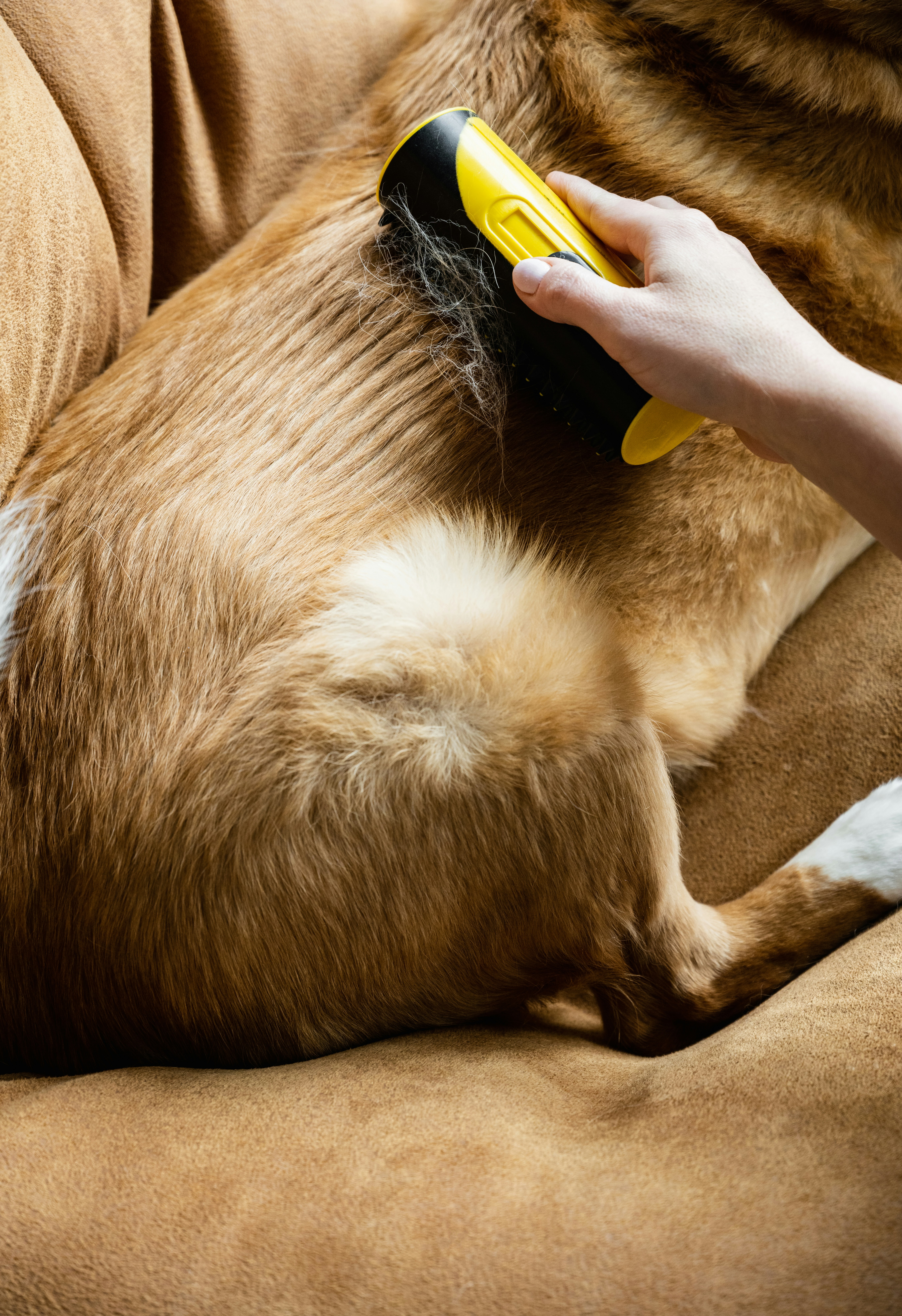
Regular grooming is vital to your dog’s overall health and well-being. Beyond keeping your pet looking good, essential grooming helps prevent common skin problems, reduces shedding, and strengthens the bond between you and your dog. Whether your dog has short hair or a thick double coat, understanding the grooming needs specific to their breed and lifestyle will ensure they stay comfortable and clean.
Brushing: The Foundation of Grooming
Brushing your dog’s coat is the most basic yet essential grooming practice. Regular brushing removes dirt and loose hair, and prevents matting, which can cause skin irritation. The frequency and type of brushing depend on your dog’s coat. Short-haired breeds may only need weekly brushing, while long-haired or double-coated breeds require daily care to keep their fur tangle-free.
Using the right brush for your dog’s coat type is essential. Slicker brushes work well for long, curly, or thick coats, while bristle brushes suit short-haired dogs. Undercoat rakes can help remove dead fur efficiently for dogs prone to shedding. Brushing also stimulates natural oils in the skin, promoting a shiny and healthy coat.
Bathing: Keep it Clean but Not Overdone
Bathing your dog is essential to keeping it clean, but over-bathing can strip natural oils and lead to dry skin. Most dogs benefit from a bath every four to six weeks, which can vary depending on activity level and coat type. Dogs that spend a lot of time outdoors may require more frequent baths.
Use a dog-specific shampoo formulated for their skin’s pH balance. Avoid human shampoos, which can be too harsh. Thoroughly rinse all shampoo out to prevent irritation. After the bath, towel dry your dog and, if possible, use a blow dryer on a low setting to fully dry thick coats, preventing mildew or skin infections.
Nail Care: Prevent Discomfort and Injury
Keeping your dog’s nails trimmed is crucial for their comfort and mobility. Overgrown nails can cause pain, affect walking, and lead to joint problems. Most dogs need nail trimming every three to four weeks, though active dogs that walk on pavement may naturally wear their nails down.
If you’re trimming nails at home, use a sharp nail clipper designed for dogs and avoid cutting too close to the quick — the sensitive area inside the nail that contains blood vessels. If you’re unsure, a veterinarian or professional groomer can help. Regular nail care also reduces the risk of nails breaking or snagging, which can be painful and cause infections.
Ear Care: Preventing Infections
Dogs with floppy ears or narrow ear canals are more prone to ear infections. Regular ear cleaning prevents the buildup of wax, dirt, and moisture that can harbor bacteria and yeast. Check your dog’s ears weekly for redness, foul odor, or discharge, which are signs of infection.
Use a vet-recommended ear cleaning solution and gently wipe the inside of the ear with a cotton ball or soft cloth. Avoid using cotton swabs deep inside the ear canal, which can cause damage. Routine ear care not only prevents infections but also keeps your dog comfortable and reduces scratching or shaking of the head.
Dental Hygiene: Protecting Your Dog’s Smile
Dental health is often overlooked but is critical to your dog’s overall wellness. Poor oral hygiene can lead to bad breath, tooth decay, and gum disease, possibly contributing to heart and kidney problems. Aim to brush your dog’s teeth daily or at least several times a week using dog-specific toothpaste and toothbrushes.
Dental chews and toys can help reduce plaque buildup if brushing is not feasible. Regular dental checkups with your vet are essential to detect and treat any issues early. Maintaining dental hygiene improves your dog’s quality of life and prevents painful infections.
Coat Trimming and Haircuts
Some dog breeds require regular haircuts to maintain a manageable coat length and prevent matting. Breeds like Poodles, Shih Tzus, and Bichon Frises benefit from professional grooming every six to eight weeks. Clipping the coat helps regulate temperature and reduces the accumulation of dirt and debris.
If you prefer trimming your dog’s coat at home, invest in quality grooming tools and learn proper techniques to avoid injuring your pet. Regular trimming around the eyes, paws, and sanitary areas keeps your dog clean and comfortable.
Seasonal Grooming Adjustments
Dogs’ grooming needs can change with the seasons. In warmer months, more frequent baths and trimming may be necessary to help your dog stay calm and prevent skin infections. Shedding increases during spring and fall, requiring extra brushing sessions to manage loose hair and maintain coat health.
During colder months, avoid shaving the coat too short, as dogs rely on their fur for warmth. Year-round grooming supports your dog’s skin health and adapts to their changing environment.
Creating a Positive Grooming Experience
Helping your dog enjoy grooming starts with making the experience positive and stress-free. Use treats, praise, and gentle handling to build trust and cooperation. Start grooming routines early in your dog’s life or gradually introduce new tasks to adult dogs.
If your dog shows fear or anxiety, break grooming into short, manageable sessions and consult a professional groomer or trainer. A relaxed dog will benefit more from grooming and strengthen the bond with their owner.
Grooming is more than just a cosmetic routine; it’s a key component of your dog’s health and happiness. Regular brushing, bathing, nail care, ear cleaning, dental hygiene, and coat maintenance prevent common health problems and keep your dog feeling their best. Understanding your dog’s unique grooming needs and creating a positive grooming experience ensures a lifelong partnership built on care and trust. With patience and consistency, grooming becomes a rewarding ritual that contributes to your dog’s well-being and your enjoyment as a pet owner.